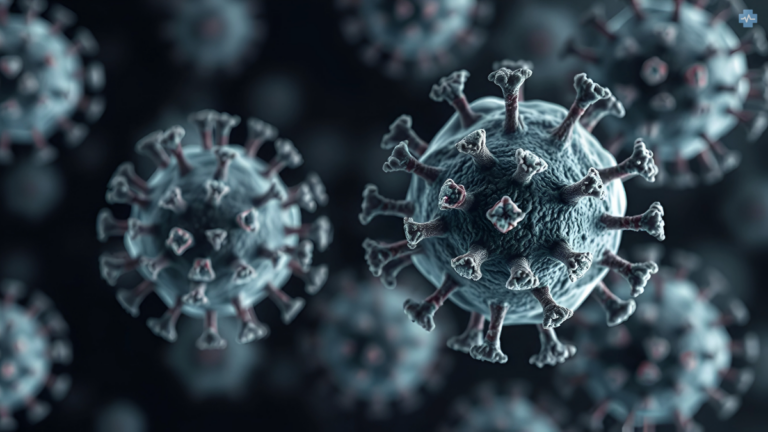Medical professionals have expressed concerns around ‘stubbornly high’ levels of the Norovirus recorded in England in recent weeks. These levels have been referred to as ‘the highest recorded’ for the region.
Official data shows that 903 hospital beds were filled each day this past week, with patients suffering from the virus. In 2024, 556 hospital cases per day in the same period were reported – almost half of the number reported this year.
The actual number of cases this year, compared with last year’s reported cases, is as much as 62 percent higher. At the same time, Norovirus cases have risen earlier than usual. They typically rise around Autumn and into winter, however, this year, they have increased earlier than usual.
With this rise in norovirus cases, questions from the public and officials are also increasing. What is the cause of this increase in case numbers and should we be concerned?
One of the reasons for the rise in cases is the emergence of new strains of Norovirus. There is a significant change in circulating Norovirus genotypes this season. One of the new emergent strains is the GII.17 strain. This variant can evade existing immunity.
Unusually colder temperatures for the season might also be one of the reasons behind the increase. What happens is that during colder weather, people like to be indoors and this increases the likelihood of transmission.
Norovirus Key Information
| Feature | Description |
| What it is | A very contagious virus causing vomiting and diarrhoea (gastroenteritis). Often called the “winter vomiting bug” but can occur year-round. Not related to the flu. |
| Symptoms | Usually start suddenly 12-48 hours after exposure. Common symptoms include nausea, vomiting (can be projectile), diarrhoea (watery), and stomach cramps. Other symptoms can include low-grade fever, chills, headache, and muscle aches. |
| Duration | Symptoms typically last for 1-3 days. Most people recover fully without long-term effects. However, individuals can remain contagious for a few days after symptoms stop. |
| Contagiousness | Highly contagious. Spreads easily through direct contact with infected individuals, consuming contaminated food or drinks, and touching contaminated surfaces then the mouth. Can spread even before symptoms start and after they have stopped. |
| Transmission | Close contact with someone infected, sharing food or utensils, eating food handled by someone infected, touching contaminated surfaces, and consuming contaminated food or water (including raw or undercooked shellfish). |
| Risk Factors | Anyone can get norovirus. Outbreaks are common in close-contact settings like hospitals, care homes, schools, and cruise ships. Young children, older adults, and those with weakened immune systems are at higher risk of severe illness and dehydration. |
| Complications | Dehydration is the main concern, especially in vulnerable populations. Severe dehydration may require medical attention and intravenous fluids. |
| Diagnosis | Usually based on symptoms. A stool sample can confirm norovirus, especially in those with weakened immune systems or other medical conditions. |
| Treatment | No specific antiviral medication. Treatment focuses on supportive care, primarily preventing dehydration by drinking plenty of fluids (water, oral rehydration solutions). Avoid sugary or fizzy drinks. Rest is also important. |
| Prevention | Frequent and thorough handwashing with soap and warm water for at least 20 seconds (alcohol-based hand sanitisers are not as effective). Cook shellfish thoroughly. Wash fruits and vegetables. Clean and disinfect contaminated surfaces with a bleach-based cleaner. Wash laundry in hot water. Stay home for at least 48 hours after symptoms stop. Avoid preparing food for others while sick and for 48 hours after recovery. |
| Important Notes | You can get norovirus multiple times as there are different strains and immunity is short-lived. Antibiotics are ineffective as they target bacteria, not viruses. Seek medical advice if you suspect severe dehydration or have other concerning symptoms. |
The increase in cases might also be a reflection of strengthened reporting mechanisms, more than likely put in place as a spin-off of the Covid-19 when case documenting and reporting structures were strengthened. Following this rise of cases, officials have warned the public to stay away from hospitals, and to wear masks when visiting hospitals.
Dr Lesley Larkin, Surveillance Lead, Gastrointestinal Infections and Food Safety Division at UKHSA, says: “Norovirus levels are currently the highest we have seen at this time of year in over a decade. Most reported cases are in the over 65s and we’re also seeing an increase in reported outbreaks, particularly in care home settings.”
She continued: “Please stay at home if you are experiencing norovirus symptoms and don’t return to work (particularly if you work with vulnerable people or food) or send sick children to school or nursery until 48 hours after symptoms have cleared. If you have a loved one in a care home or hospital, please avoid visiting until 48 hours after symptoms have cleared. Regular hand washing is also really important to help stop the spread of this bug, but remember, alcohol gels do not kill off norovirus so washing with soap and warm water is best.”
The Norovirus is known as the ‘winter vomiting bug’, and its symptoms include feeling generally unwell, diarrhea, vomiting, a high temperature, a headache and aching arms and legs. The virus is unpleasant but symptoms usually ease within a few days. Recovery at home is suggested, with rest and plenty of fluids. Keep safe.

